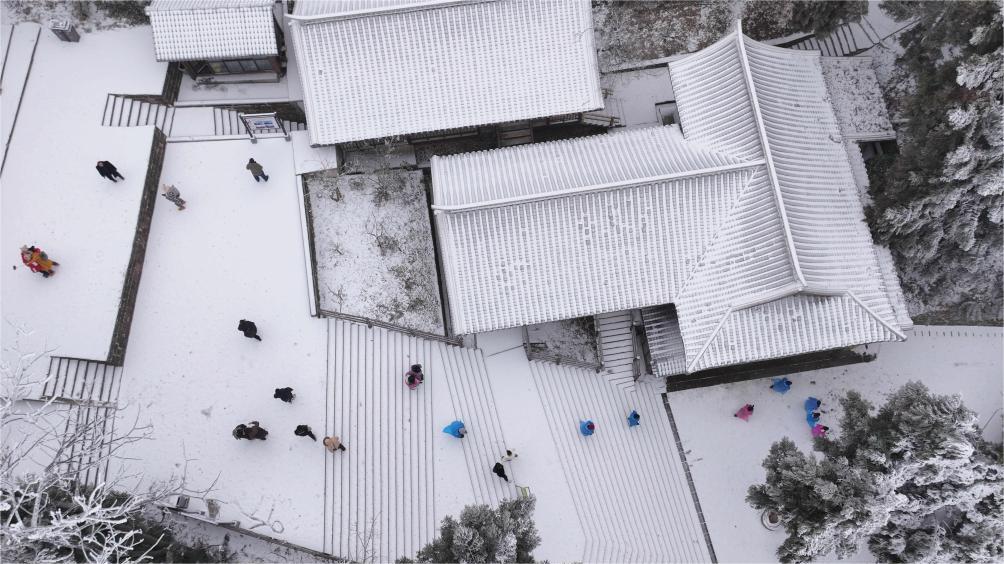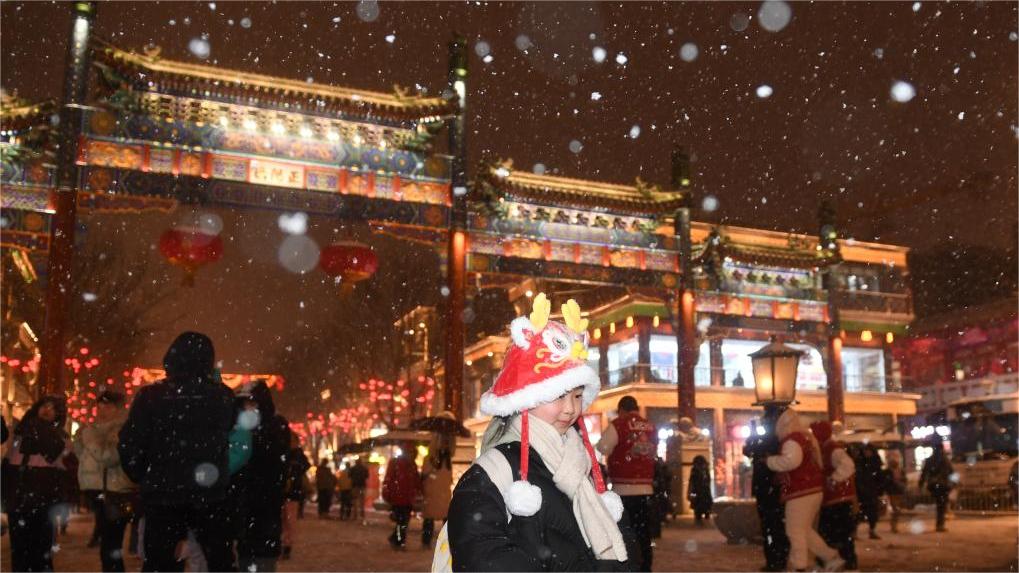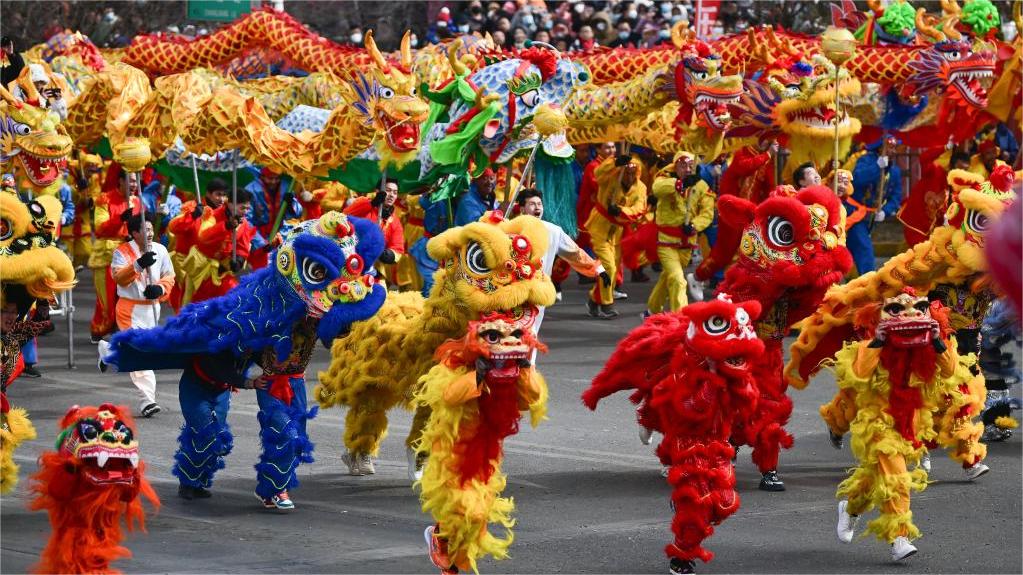Ice and snow tourism surge translates into thriving economy
During the Spring Festival holiday, the northeastern provinces of China, along with Beijing and Xinjiang Uygur Autonomous Region in the northwest, were abuzz with winter tourism and sports activities.
On Feb. 18, the northeastern provinces witnessed a drop in temperature and welcomed snowfall. That day, they celebrated the remarkable accomplishments made in tourism over the Spring Festival holiday. The number of tourists received and the overall tourism revenue saw substantial growth compared to 2019.
Amidst the rising numbers were lively scenes of snow and ice activities that not only captivated participants but also served as a catalyst for stimulating the economy through the utilization of "cold resources."
As the sun set, the Harbin Ice-Snow World in Harbin, northeast China's Heilongjiang Province, came alive with colorful ice sculptures, a giant Ferris wheel in the shape of a snowflake, and a 521-meter-long ice slide. Over the course of 61 days, the attraction welcomed a total of 2.71 million visitors.
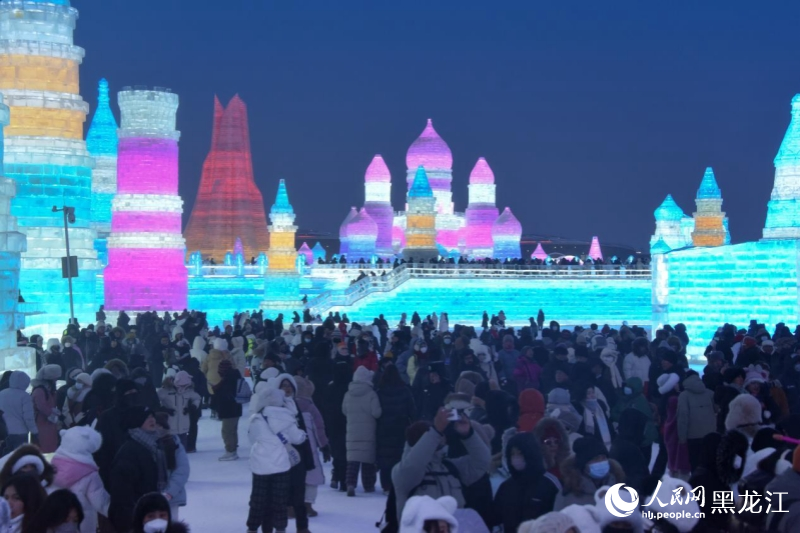
After nightfall, the stunning Harbin Ice-Snow World attracts a multitude of tourists. (People's Daily Online/Xu Chenglong)
On the third day of the Lunar New Year, train G3603 arrived at Changbaishan Railway Station in Jilin Province from Beijing Chaoyang Railway Station in Beijing. Passengers eagerly disembarked as soon as it came to a stop.
According to station manager Li Hongwei, tickets to the renowned Changbai Mountain from various locations have been in high demand. The high-speed railway currently brings an average of about 5,000 tourists per day.
The influx of tourists has brought a good economic income to the local residents.
"Our business turnover has increased by nearly 50 percent compared to last year, and we can sell 50 iron pot stews a day," said Xu Juan, a villager from Guosong village, situated at the foot of Changbai Mountain. Iron pot stew is a specialty dish in northeast China.
Many residents in Guosong village, like Xu, have capitalized on the thriving ice and snow tourism scene by opening restaurants and B&B hotels. This transformation has turned their once quiet winter into a busy season.
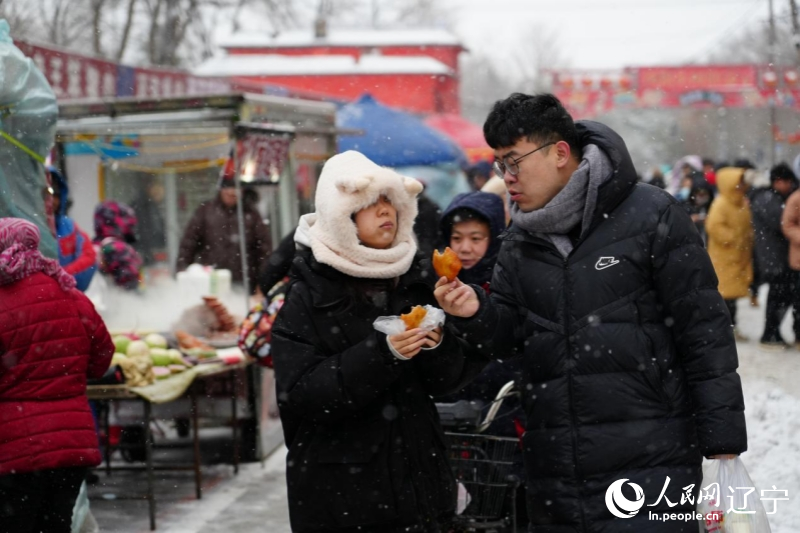
Tourists take pictures at a morning market in Shenyang, northeast China's Liaoning Province. (People's Daily Online/Zhou Songxue)
A report on China's winter tourism issued by the China Tourism Academy showed that the number of people participating in ice and snow-related leisure travel in China is expected to reach 400 million for the first time in the 2023-2024 winter season. Additionally, the revenue generated by this sector is projected to reach 550 billion yuan (about $76.44 billion) this season.
On the evening of Feb. 17, the 14th National Winter Games opened in north China's Inner Mongolia Autonomous Region. The participation of delegations from southern provinces highlighted the transformation of winter sports from being a niche and regional field to becoming popular nationwide.
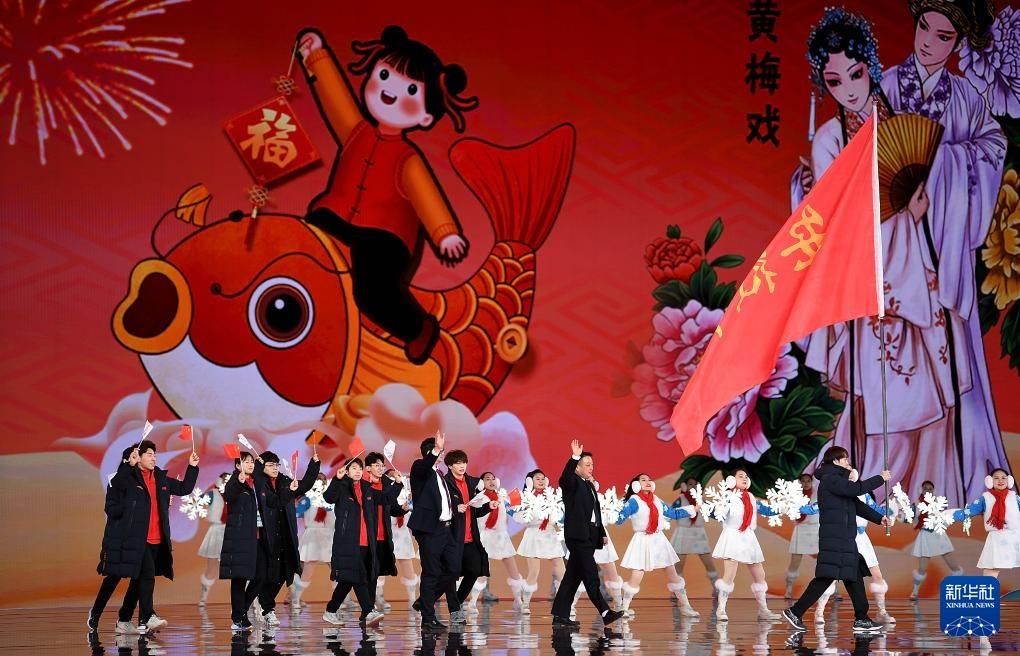
The delegation from east China's Anhui Province makes its entrance at the opening ceremony of the 14th National Winter Games on Feb. 17, 2024. (Xinhua/Deng Hua)
While the 14th National Winter Games events were in full swing, the Jiangjun Mountain Ski Resort in Xinjiang's Altay was also bustling with activity.

Chen Xuedong, a tourist from Beijing, glides down the slope at a ski resort in Xinjiang, using his homemade skiing equipment. (Photo/Fu Haodong)
Chen Xuedong, hailing from Beijing, has spent eight consecutive winters in Altay and has witnessed the remarkable transformations that have taken place in this ski resort.
"Initially, there was only one ski equipment hall and a handful of slopes. Now we have two ski equipment halls, and the number of slopes continues to grow," Chen said.
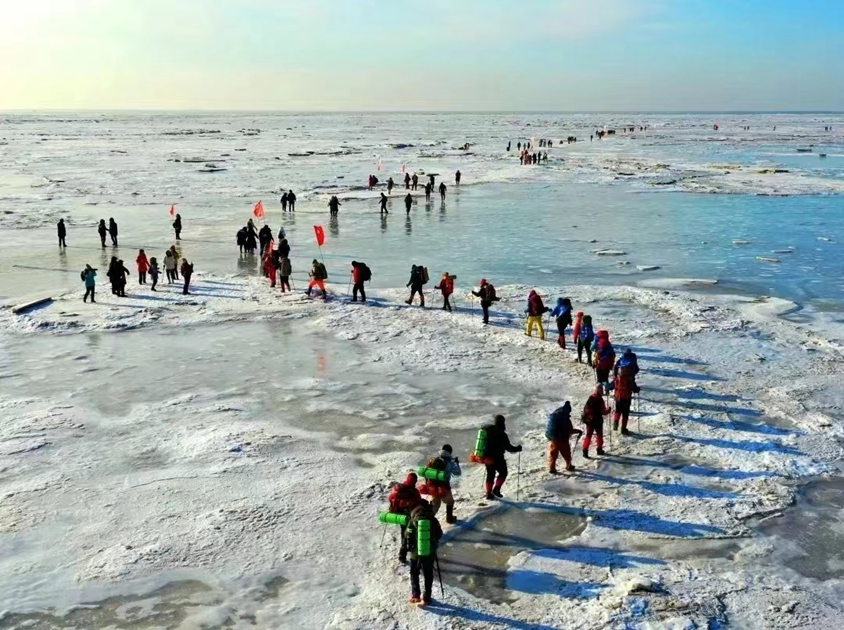
Tourists enjoy snow and ice activities at the Honghaitan Red Beach scenic area in Panjin, northeast China's Liaoning Province. (Photo provided by the Publicity Department of the CPC Panjin Municipal Committee)
In Anshan, a city in northeast China's Liaoning Province, local clothing manufacturers have found prosperity in the ice and snow market.
"We seized the opportunity, developed new products, and received a steady stream of orders for ice and snow outdoor clothing, with exports reaching nearly 100 million yuan, a new record," said Kong Lingjie, chairman of a local apparel company.
The company's latest series of ski suits has been well-received by skiing enthusiasts from countries like Russia and Japan, as they meet the requirements of high-level competitive skiing.
In the Ice and Snow Sports Apparel Industrial Park in Liaoyuan city, Jilin, machines hummed and workers fulfilled orders for socks.
"Developed with special technology, these socks can achieve an average temperature increase of eight degrees Celsius," said Zhang Shengjie, deputy general manager of the park.
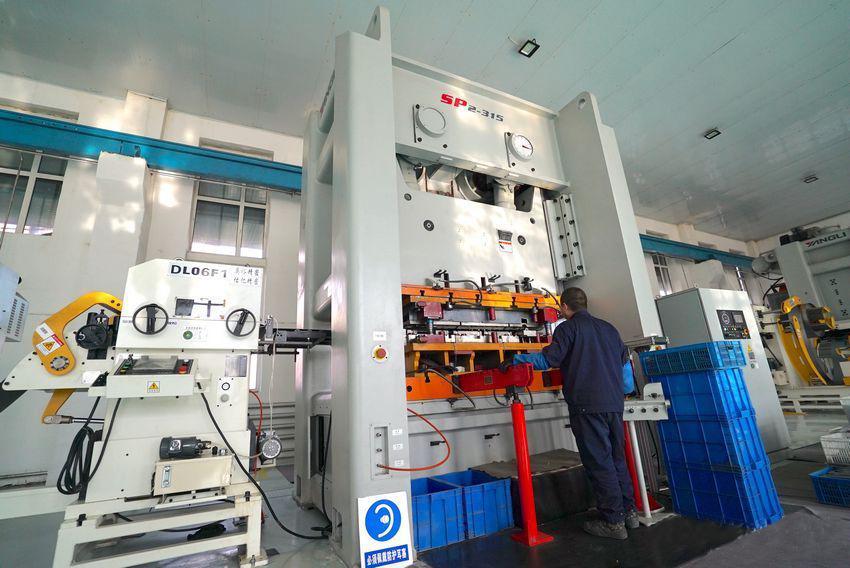
A worker operates a machine making parts for ice skate blades. (Photo courtesy of Qiqihar Heilong International Ice and Snow Equipment Co., Ltd.)
Workers at Qiqihar Heilong International Ice and Snow Equipment Co., Ltd. were stepping up the production of ice skate blades for Kazakhstan after the Spring Festival holiday.
"Our workshop boasts a fully computer-controlled production line, where robots are used to enhance efficiency and maintain quality," explained Wang Gang, a worker.
"In the next three to five years, China's ice and snow equipment sector is set to transition from low-end manufacturing to high-end intelligent manufacturing, with an anticipated annual growth rate of 9 percent to 9 percent," said Xin Benlu, director of the laboratory of equipment and intelligent service technology for ice and snow tourism venues under Jilin University.
According to a report on the development of China's ice and snow industry, the industry has reached a more stable and sustainable stage of development, and is expected to reach 1 trillion yuan in 2025.
Photos
Related Stories
- Wenchang in S China's Hainan pushes forward aerospace-related tourism
- Tourist industries tap into lures of culture
- Top China travel destination makes bid for U.S. tourists
- China's thriving outbound tourism contributes to global economic recovery
- Litang in SW China's Sichuan province finds secrets to tourism
Copyright © 2024 People's Daily Online. All Rights Reserved.







